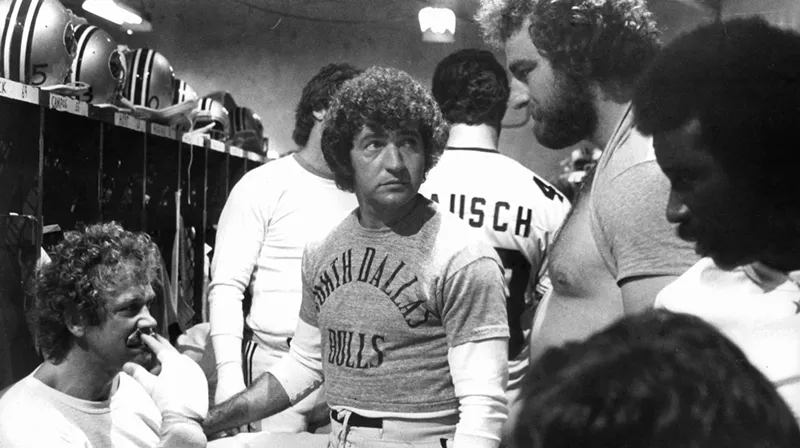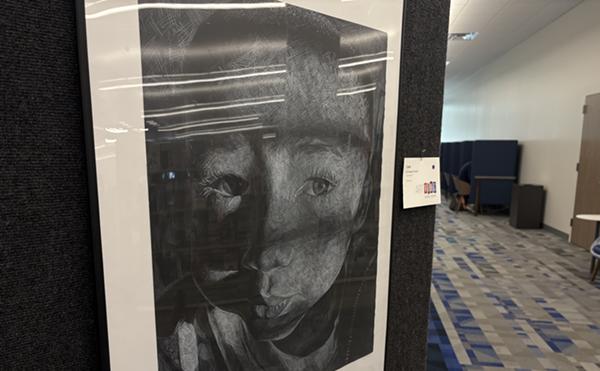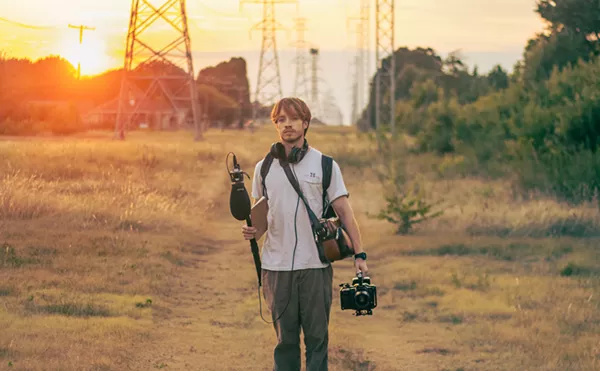As much as we talk about the Cowboys today, they don’t compare to the Cowboys of the past. Toward the end of the 20th century, Dallas was a football and party powerhouse. No movie showcases the partying and brutality of late '70s Cowboys (or the fictional North Dallas Bulls, as the movie portrays) than the 1979 film North Dallas Forty.
Sports movies have a tendency to be formulaic, almost invariably following the plot of a team overcoming some strife to win the big game/championship/title. This is not the case for North Dallas Forty, which turns 45 this month.
The satirical movie, directed by Ted Kotcheff, stars a shockingly young Nick Nolte as Phil Elliot, the perpetually in-pain wide receiver based on author Peter Gent. The path Gent took to the NFL looks insane by today’s standards; he started out as a basketball player at Michigan State. He never played college football before becoming wide receiver for the Cowboys for four years. He went on to be a successful writer before his death in 2011.
This is not a feel-good movie. North Dallas Forty forces us to watch the pain and suffering of our main character and his fellow players. Perpetually tossing painkillers, he's seen in the opening scene after a Sunday game, blood staining the pillowcase, as he takes inventory of all the aches and pains he’s experiencing. It’s important because we can sense the character’s pain in his self-reflection; he’s a man suffering to play football.
Mind you, this is in a time before CTE awareness, when players were expected to party the brain injujries away. The Cowboys, or North Dallas Bulls, rather, are depicted as a machine that chews up and spits out players. Virtually all the players are shown in some degree of pain, and at one point it’s revealed that the team's owners hired a private detective to follow Elliot around and report on his actions, specifically his dope-smoking and philandering.
The characters are broadly reminiscent of real-life players; quarterback Seth Maxwell, played by Lubbock-native Mac Davis in his debut film role, is loosely but obviously based on Dandy Don Meredith. Coach B.A. Strothers does not seem dissimilar from the great Tom Landry. Peter Gent claimed the book was a complete work of fiction, and the depictions are broad but familiar.
What truly sets this movie apart is that it’s barely a sports movie; it’s more The Jungle for the NFL juggernaut. The coaches and management are oppressive and scheming, while the players are worn down and tired. There is no glitz and glamour here, no Lamborghinis racing down the Dallas North Tollway. It’s a movie that shows the dark side of the NFL, decades before CTE and the other ailments that plague professional football players had become common vernacular.
Gent’s novel, even darker than the movie, delves into real issues faced by the world at the time. The title North Dallas Forty refers to the Cowboys practice field in North Dallas that Black players weren’t allowed to live near in 1964, when Gent played for the team.
According to a retrospective from Texas Monthly, “The book intermingles the Bulls’ locker-room drama with scenes drawn from civil rights riots and the Vietnam War, placing the athletes' suffering — and the commodification of that suffering — along a broad spectrum of American Callousness.”
City of Hype
When the book was written, Dallas was still known as the “City of Hate.” But the movie takes place years later, in a different Dallas. It's the city best known from the show Dallas, where it was a patriotic land of opportunity and a capitalist wonderland — at least for those fortunate enough to have the resources.Those involved in the making of the movie were blacklisted by the league. Hall of Famer Tom Fears, who worked as a football advisor on the film, had his scouting contracts canceled by the NFL as a result.
Aside from the real-life implications of the movie, the black comedy aspects are worth a laugh. At least the ones that aren’t problematic, because many didn’t age well. In one scene early on, linebacker Jo Bob attempts to take home Charlotte, Elliot’s future love interest. She doesn’t consent, and he threatens to take her home against her will until Elliot steps in. In the movie, the scene is played for laughs, a very “boys will be boys” type of interaction. When you watch it today, it’s cringe-inducing if not downright infuriating.
Later, quarterback Maxwell laughs it off with a “the girls who come to these parties know what they’re getting into” remark.
The scene is just gross, and any reaction other than disgust is a red flag. It’s particularly alarming because so much of the movie was at least “loosely” based on reality.
At the end of the movie, Elliot gets his happy ending. He gives up football, ends his suffering and gets with Charlotte. He quits the machine that’s tearing him up and chooses his happiness.
The movie is simultaneously an artifact of its time and well ahead of it. In that way, it's not unlike the city of Dallas itself: problematic, with glimpses of the future, but one foot firmly planted in the past. The movie was prescient in its portrayal of the league, showing the surveillance of players, the use of computers and statistics over traditional coaching methods and player instincts, and the treatment of players as tools and not people.
For that reason, North Dallas Forty endures over other sports movies, and has become a cult classic in its own right.













